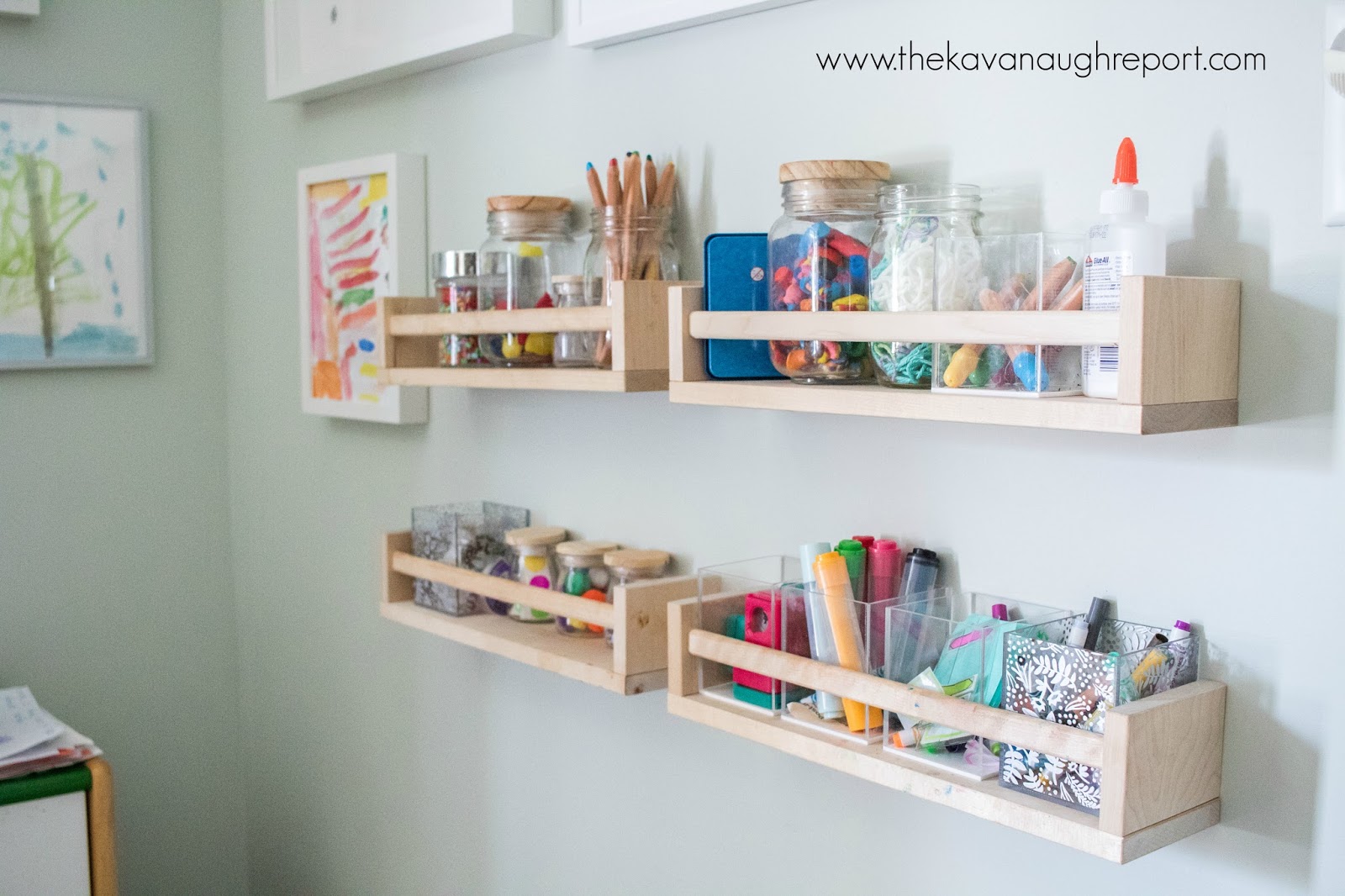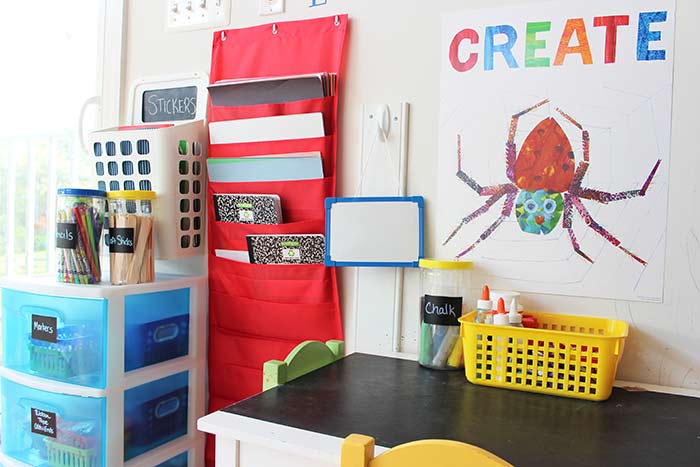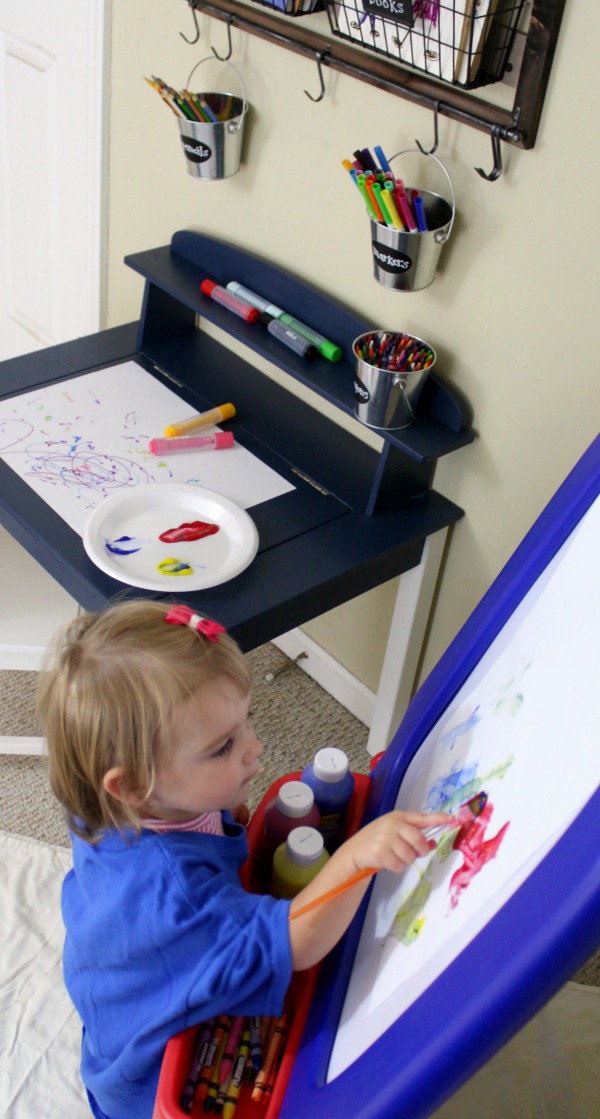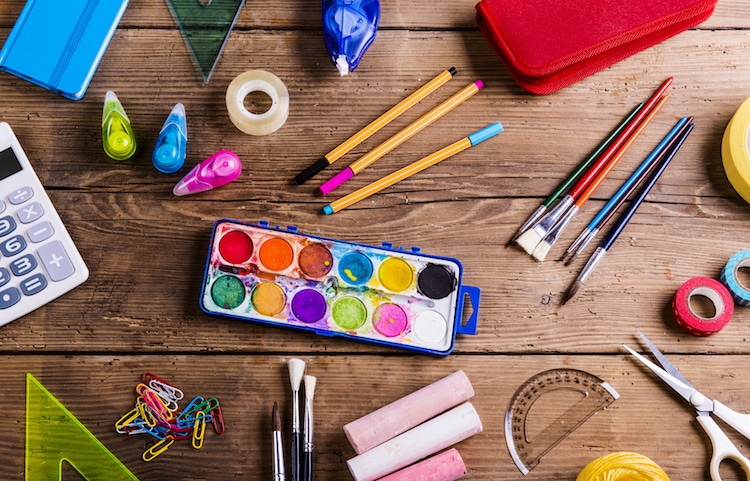
You can get by with minimal spaces
Be on the lookout for small spaces, like under stairs, that you can convert to art spaces. You need a desk and space for supplies, that's it.
If your home only allows for a small art studio, go vertical with storage! Floating or corner shelves are perfect for storing sketchbooks while pegboards with wire baskets are great for storing paints or writing utensils. You can also use a few colorful cups and zip ties on a pegboard to make a cute, budget-friendly place to store markers, paintbrushes, and other art supplies.
Use Rolling Carts for Supplies
A rolling cart holding art supplies can be moved around
Fill unbreakable jars and containers with brushes, construction paper, or glue sticks on a rolling storage cart. This storage idea not only keeps all of your materials organized, but it also allows to you easily move supplies around the room and have a mini art studio that can be transported around the house.
Here is what I keep in the up~cycled tin cans on top shelf:
~Regular scissors and set of fun edger scissors with spinning caddy
~Prang groove triangular coloring pencils
~Sharpie highlighters
~Glitter gel pens
~Black and blue pens
~Assorted markers
~Rock crayons and regular crayons
~Dot markers
~Tempera paint sticks
~Watercolor brush pens
Middle art shelf:
Rulers
Erasers, pencil sharpeners
Stamps and envelopes (eg, handmade greeting cards for writing practice and pen pals)
Multi-purpose glue, craft tacky glue, glue stick, glitter glue, single-sided and double-sided tape , painter’s tape, white out
Hole punchers and stapler
Puffy paint
Oil pastels
Bottom Shelf:
~Jars of paint
~Several kinds of paper
~Stencils and stickers
~Craft books
~Rubber stamps and ink
The very essence of open ended art is expressing your creativity and unique spirit. OOLY’s art and DIY supplies are your best friends when creating original works of art that reflect your personality and style.



